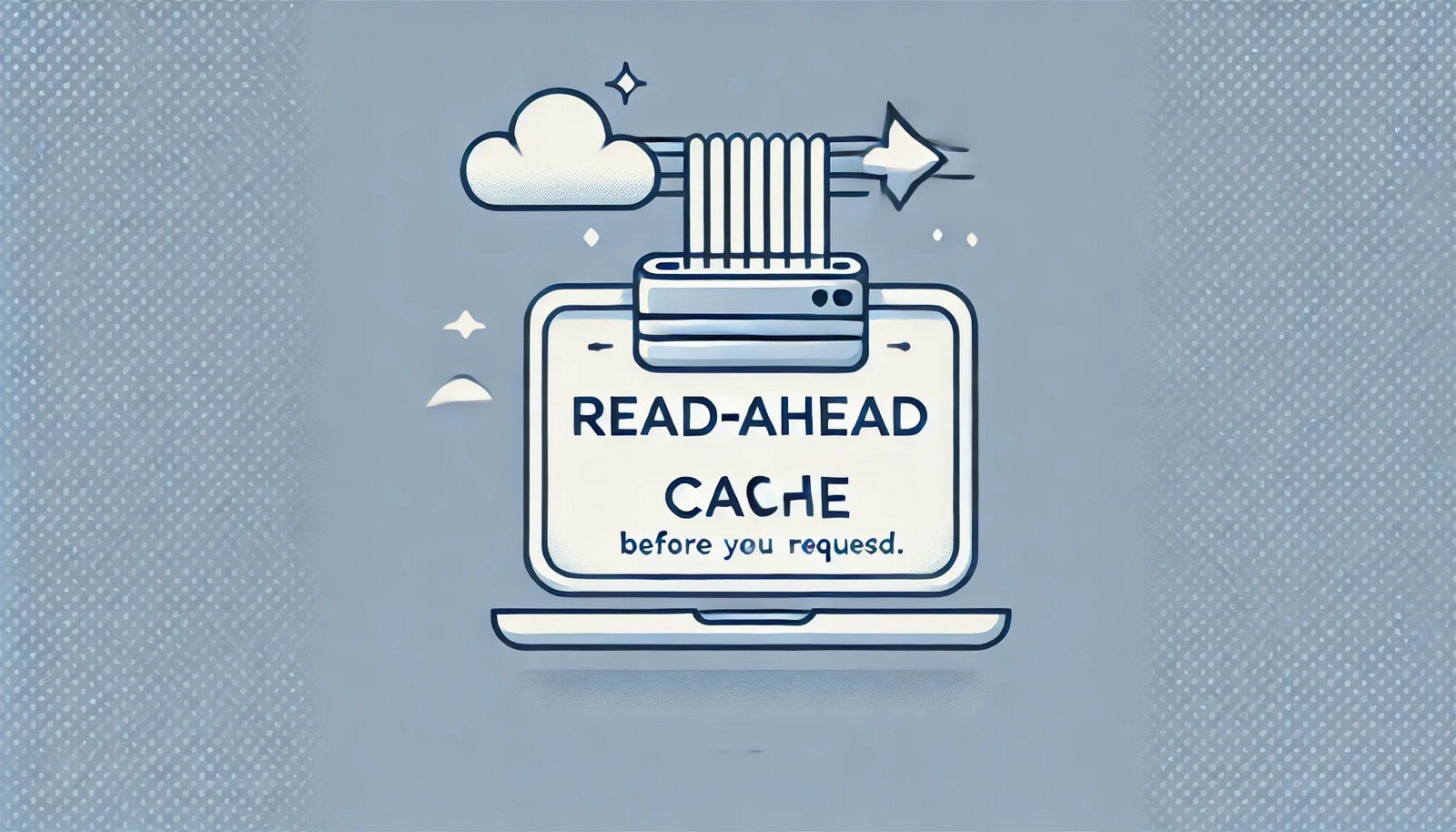Read-Ahead Cache
 (Representational Image | Source: Dall-E)
(Representational Image | Source: Dall-E)
Quick Navigation:
- Read-Ahead Cache Definition
- Read-Ahead Cache Explained Easy
- Read-Ahead Cache Origin
- Read-Ahead Cache Etymology
- Read-Ahead Cache Usage Trends
- Read-Ahead Cache Usage
- Read-Ahead Cache Examples in Context
- Read-Ahead Cache FAQ
- Read-Ahead Cache Related Words
Read-Ahead Cache Definition
A read-ahead cache is a technique used in computing where data is preloaded into memory before it is actually requested. This proactive approach helps reduce latency by anticipating future data needs and fetching it in advance. Read-ahead caching is widely employed in file systems, database management systems, and hardware storage controllers to optimize performance and minimize disk access delays.
Read-Ahead Cache Explained Easy
Imagine you are watching a video online. If your internet is slow, the video might pause to load. But if your device downloads parts of the video ahead of time, it plays smoothly without interruptions. Read-ahead caching works the same way—it guesses what data you might need next and loads it before you ask for it, making everything faster!
Read-Ahead Cache Origin
The concept of read-ahead caching emerged as storage and processing speeds became critical in computing. Early implementations appeared in operating systems and disk controllers in the late 20th century, particularly to enhance the performance of hard drives with slow mechanical access times.
Read-Ahead Cache Etymology
The term “read-ahead” comes from its function of reading data before it is explicitly requested, while “cache” refers to temporary storage that speeds up access.
Read-Ahead Cache Usage Trends
With increasing demands for speed and efficiency, read-ahead caching has become a fundamental aspect of modern computing. It is widely used in database optimization, streaming services, cloud computing, and even gaming consoles. Over time, advancements in predictive algorithms and machine learning have further improved its effectiveness.
Read-Ahead Cache Usage
- Formal/Technical Tagging:
- Operating Systems
- Storage Optimization
- Performance Enhancement - Typical Collocations:
- "read-ahead cache algorithm"
- "file system read-ahead"
- "database read-ahead caching"
- "disk read-ahead buffer"
Read-Ahead Cache Examples in Context
- A database management system uses read-ahead caching to preload frequently accessed rows, reducing query response time.
- Modern SSDs implement read-ahead techniques to minimize latency in data retrieval.
- Video streaming services use read-ahead buffering to prevent playback interruptions.
Read-Ahead Cache FAQ
- What is a read-ahead cache?
A read-ahead cache preloads data into memory before it is requested to improve access speed. - How does read-ahead caching improve performance?
By predicting and preloading future data requests, it reduces the time spent waiting for data retrieval. - Where is read-ahead caching commonly used?
It is widely used in operating systems, databases, file systems, and hardware storage controllers. - Does read-ahead caching work with all types of storage?
Yes, it is applicable to hard drives, SSDs, RAM-based storage, and cloud-based systems. - What happens if the prediction is wrong in read-ahead caching?
If the cache loads incorrect data, performance might suffer due to unnecessary memory usage, but modern systems optimize this to minimize waste. - Is read-ahead caching beneficial for gaming?
Yes, game consoles and PCs use read-ahead caching to load assets and textures before they are needed. - How does read-ahead caching help in databases?
It speeds up queries by preloading frequently accessed data blocks, reducing read times. - Can read-ahead caching be disabled?
In most systems, it can be configured or disabled, but it is generally enabled by default for performance benefits. - How does read-ahead caching affect RAM usage?
It may increase RAM consumption, but this trade-off is often worth the performance gain. - Is read-ahead caching useful for cloud storage?
Yes, it improves data retrieval speed in cloud-based applications by reducing access latency.
Read-Ahead Cache Related Words
- Categories/Topics:
- Computer Storage
- Performance Optimization
- Data Retrieval
Did you know?
The read-ahead caching technique was a game-changer for early hard drives, significantly reducing the time it took to load large files. Today, modern AI-driven caching algorithms predict user behavior to make systems even faster!
PicDictionary.com is an online dictionary in pictures. If you have questions or suggestions, please reach out to us on WhatsApp or Twitter.Authors | Arjun Vishnu | @ArjunAndVishnu

I am Vishnu. I like AI, Linux, Single Board Computers, and Cloud Computing. I create the web & video content, and I also write for popular websites.
My younger brother, Arjun handles image & video editing. Together, we run a YouTube Channel that's focused on reviewing gadgets and explaining technology.



Comments powered by CComment